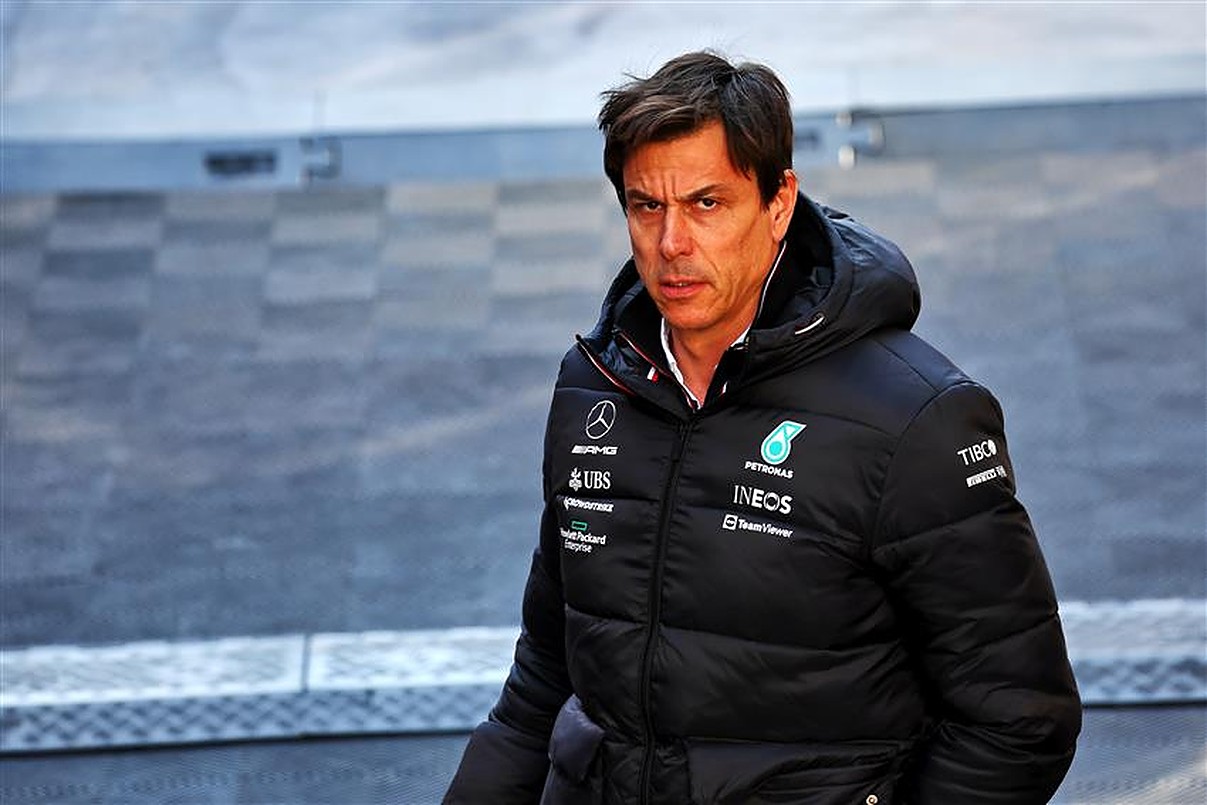Mercedes team principal Toto Wolff has reiterated the importance of keeping an eye on the budget as the team look to navigate their way out of the rough patch they are currently in.
The new technical regulations have moved the main bulk of the influential aerodynamics to the bottom of the car amid a return of the ground effect concept, and Mercedes have struggled as a result.
They have been plagued by “porpoising,” which has a detrimental impact in a variety of areas. George Russell and Sir Lewis Hamilton have had to adapt to the physical pain it brings, while visibility and speed on the straights are also affected.
READ: Sebastian Vettel and Max Verstappen call for change
Then, by the time they get to the corners, the constant oscillation can cause lock-ups as well as imbalances, making handling a nightmare.
The Silver Arrows introduced minor aerodynamic upgrades in Imola last time out, but they made little difference as the nature of the Autodromo Enzo e Dino Ferrari only seemed to serve to aggravate the woeful handling and pace.

Russell would eventually recover from P11 in the sprint to fourth in the grand prix, while Hamilton finished the race 13th having qualified in the same position on Friday, making for an abysmal experience in Italy for the 37-year-old.
The W13 is an enigma that evidently needs changing if it is to compete with Red Bull and Ferrari who, from Mercedes’ perspective, are in danger of running away from them entirely.
But it is not as simple as finding a fix akin to Hamilton’s McLaren team in 2009; the $140 million budget cap prevents teams like Mercedes from simply delving into their bottomless resources and throwing experimental pieces at the car, so Wolff recognises that the team have to be sure of the functionality of any new ideas.
“We haven’t changed the concept. If you were to do something else, that could potentially go against your cost cap, yes,” he said, quoted by RacingNews365.com.
Trackside engineer Andrew Shovlin testified after the Emilia Romagna Grand Prix that the improvements on the car will need to be progressive, and they cannot mend its performance with “one big moment.”
The Austrian believes that the patient approach will pay off and agrees, to an extent, with George Russell’s previous statement that they will solve “99 percent” of their issues if they can get to the bottom of the bouncing.
“We very much believe that the science that we’re putting in at the moment will help us to, in effect, run the car lower, where we believe we have all the aerodynamic goodness,” he explained.
“We haven’t been able to unlock that because of the bottoming of the car. If we are able to finally get on top of that, that means there’s quite some lap time we can find.
READ: Daniel Ricciardo defends ‘core F1 venues’ as Spa, Monza and Monaco face axe
“If not, we need to have another idea.”
The 50-year-old indicated that the team have not been entirely orthodox in developing their 2022 challenger, so reveals that a more pragmatic backup plan is there if they need it.
“If we don’t get on top of [the bouncing], then there is a more conventional development path that we have not yet taken,” continued Wolff, hinting that a change of development direction has been considered,” he added.
“I want to give us the time to really properly take such a decision.”
Mercedes head to Miami this weekend having hinted that an upgrade could be on its way as they look to get their 2022 season back on track.

